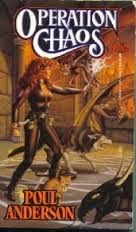Never underestimate the explanatory power of natural selection. For Poul Anderson on "Science and Creation," see here. Even when I was at University, I still thought that organisms must have been designed and I have discussed natural selection with people who clearly did not understand that:
individuals best able to survive in a given environment live longer and breed more, thus bequeathing pro-survival genes to more members of succeeding generations and changing their species in the process;
one quadruped population becomes longer-legged by evading predators whereas another such population becomes longer-necked by grazing trees, to grossly over-simplify.
Characters in some works of science fiction find evidence of design on different cosmic levels:
in Poul Anderson's Operation Chaos, inhabitants of at least one universe can directly contact either the Creator or his Adversary;
in Anderson's Genesis, the failure of rockets in an AI emulation is evidence for the artificiality of the emulated environment although its inhabitants have no way to deduce this and may even be deactivated at any moment;
in CS Lewis' Perelandra, Elwin Ransom meets the Venerian Adam and Eve;
in Carl Sagan's Contact, computations of the value of pi disclose that the numbers after the decimal point display a pattern that conveys a message;
in Arthur C Clarke's The City And The Stars, a civilization powerful enough to move heavenly bodies has constructed a circular constellation to communicate to any other space travelers, "We are here;"
in Philip Jose Farmer's Riverworld series, everyone who has died on Earth is resurrected on another planet that has been designed or redesigned to accommodate them;
SM Stirling's The Sky People (New York, 2006), set on Venus, contains the following dialogue:
Marc: "'You don't mean the aliens-did-it stuff, eh?'"
Cynthia: "'You got a better explanation? And that explains a lot - how Venus has a fossil record that ends two hundred million years ago, and how you've got dinosaurs and people together at the same time. This place isn't a naturally living planet at all: it's a terrarium, a zoo. An experimental station.'" (p. 201)
However, as yet, our universe displays no such signs of cosmic engineering - no radio messages, Dyson spheres, artifacts moving at near light speed etc.



1 comment:
Kaor, Paul!
I recall your comments about how cruel Gaia, the AI of the Earth of two hundred million years or more from now that we see in GENESIS, was to the emulations of the "people" she created. And it was the pathetic efforts of the emulations trying to experiment with rockets which WOULD have worked in a real world which truly brought home Gaia's cruelty to me.
Sean
Post a Comment